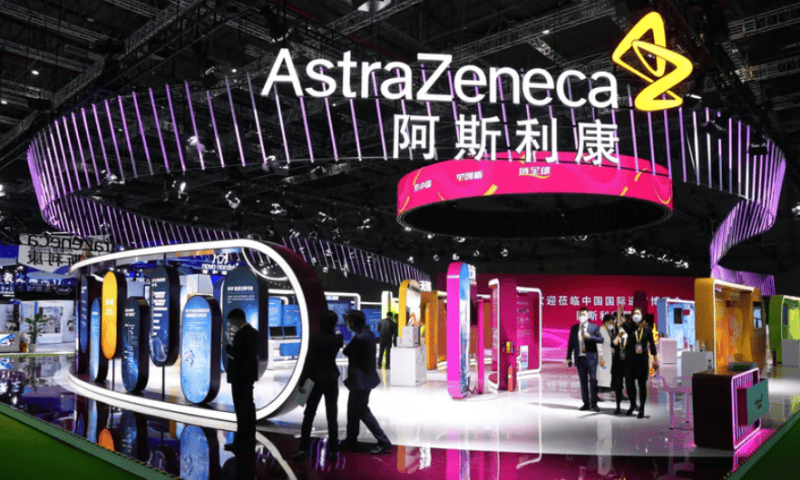AstraZeneca is buying its way back into the obesity drug gold rush. Months after dropping its own oral GLP-1 agonist, the Big Pharma has agreed to pay Eccogene $185 million for a similar small molecule that it believes can stake a claim to a market targeted by Eli Lilly, Novo Nordisk, Pfizer and others.
The Anglo-Swedish drugmaker announced the deal on the same day that it used its third-quarter earnings results to reveal (PDF) it has pulled sickle cell disease and paroxysmal nocturnal hemoglobinuria (PNH) trials from its phase 2 pipeline.
But the bigger news today was the Eccogene agreement. AstraZeneca had previously acknowledged the level of competition for the oral GLP-1 market, which may deliver a more convenient alternative to injectable diabetes and weight loss drugs such as Wegovy and Mounjaro, when it stopped development of AZD0186 over the summer. The company took the oral GLP-1 agonist into phase 1 only to pull out after concluding it was insufficiently differentiated.
Now, the pharma has brought in another early-phase GLP-1 agonist. Eccogene took the one-daily drug candidate, ECC5004, into a phase 1 clinical trial in patients with Type 1 diabetes late last year, putting it well behind the front-runners in the oral GLP-1 race. AstraZeneca sees opportunities for the molecule.
“We believe this oral GLP-1RA molecule could offer alternatives to current injectable therapies both as a potential monotherapy as well as in combination for cardiometabolic diseases such as Type 2 diabetes, as well as for obesity,” Sharon Barr, executive vice president, biopharmaceuticals R&D at AstraZeneca, said in a statement.
Little evidence is publicly available to support Barr’s belief in the program. AstraZeneca said preliminary phase 1 results “have shown a differentiating clinical profile for ECC5004, with good tolerability and encouraging glucose and body weight reduction across the dose levels tested compared to placebo,” but it is yet to share numbers to support the claims.
Whatever data AstraZeneca saw persuaded it to open its wallet wide. In addition to the $185 million upfront, the Big Pharma agreed to pay up to $1.8 billion in future clinical, regulatory and commercial milestones. The deal gives AstraZeneca global rights to ECC5004, although Eccogene has kept the right to co-develop and co-commercialize the molecule in China.
Referencing AstraZeneca’s reason for exiting the GLP-1 space last time, CEO Pascal Soriot said the company would not have licensed ECC5004 “if we didn’t think it is differentiated.”
“Our own product was going to be more of a twice-a-day agent and not differentiated. This one is a once-a-day agent,” Soriot told Fierce on an earnings call with journalists this morning. “Because it has very good and rapid absorption, it doesn’t stay around the stomach too long and we may therefore expect it to be much better tolerated. And that’s what the clinical data we have shows.”
Another potential avenue to differentiate ECC5004 will be by combining it with AstraZeneca’s existing portfolio, added the CEO, who namechecked diabetes drug Farxiga and investigational hypertension drug baxdrostat as two obvious potential combo partners.
AstraZeneca freed up some space in its pipeline via a couple of changes disclosed today. The PNH program being removed is vemircopan, a molecule that, like the near-approval danicopan, is designed to inhibit factor D. AstraZeneca reported positive phase 3 data on danicopan in PNH earlier this year, boostings its efforts to win approval in the setting, but previously identified a need for another oral factor D inhibitor to unlock other indications.
Work on vemircopan in PNH is stopping, with AstraZeneca halting a trial because of efficacy, but studies in other indications including generalized myasthenia gravis are continuing. Data from three phase 1 and 2 clinical trials of the oral candidate are scheduled for publication next year.
The sickle cell candidate being dropped, bispecific nanobody tarperprumig, isn’t in development in other settings. AstraZeneca, working through its Alexion rare disease unit, moved the asset into a phase 2a sickle cell trial in the belief that simultaneously binding human albumin and properdin may treat acute and chronic complications. The company stopped the trial as part of a “strategic portfolio prioritization.”

